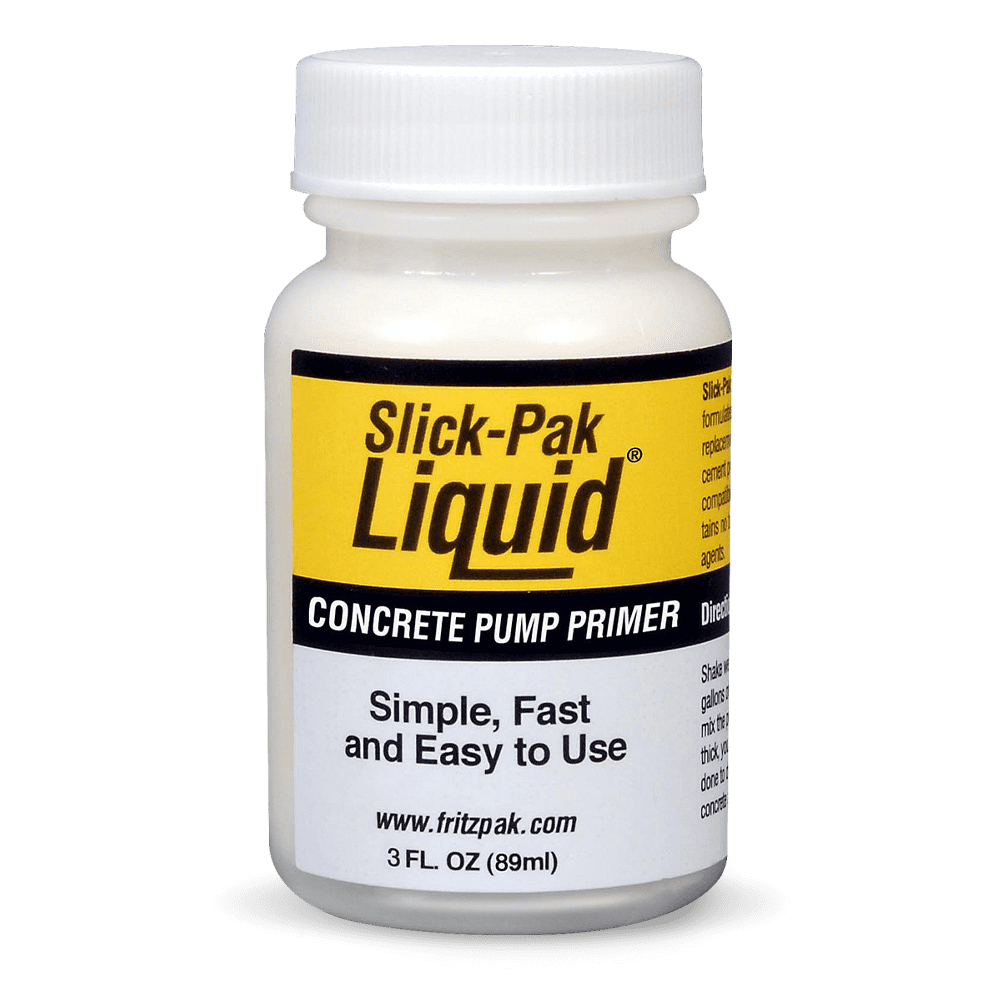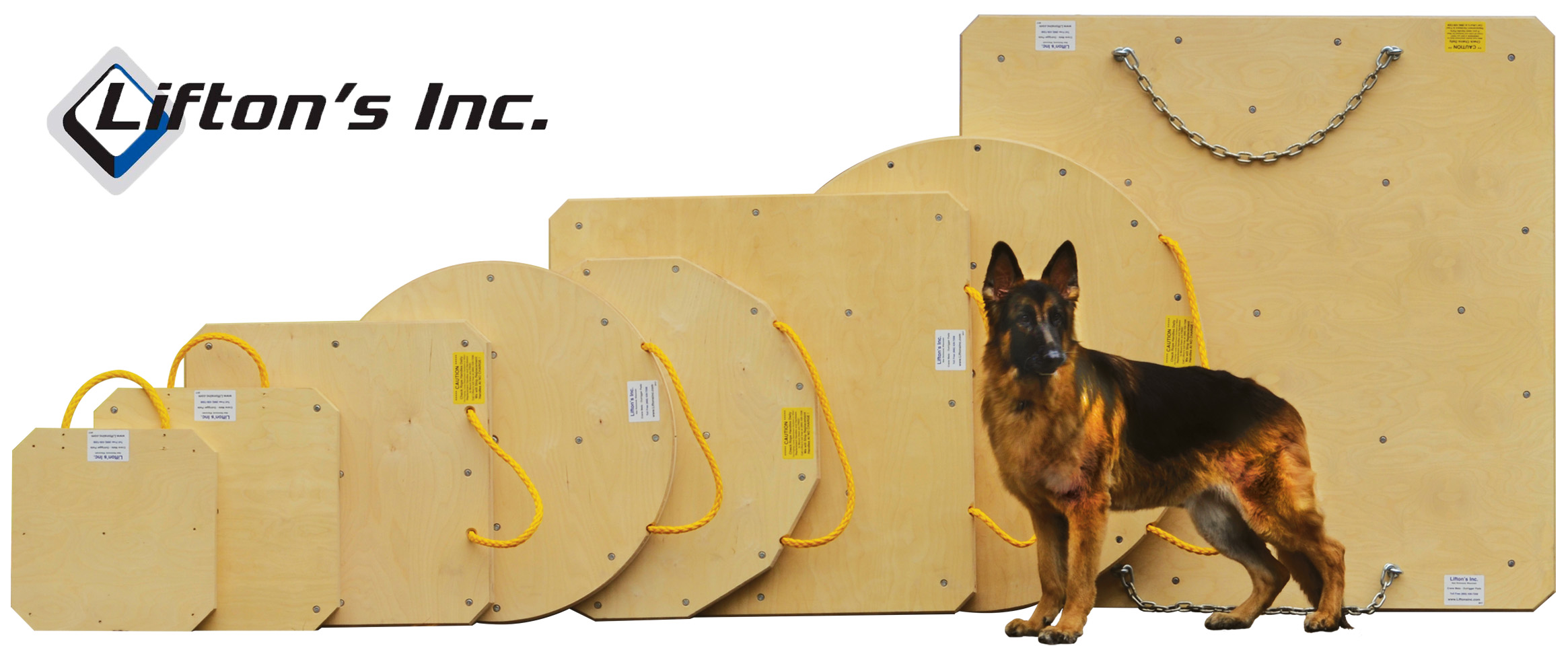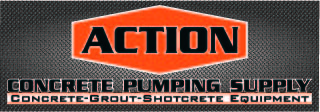What Is Concrete
What is Concrete
In order to fully understand concrete pumping we must first understand the material that is involved. First we will learn a little about the material that we will be working with.
Concrete is about the oldest building material known to mankind. Second only to wood and stone, concrete has been used for hundreds of years to construct buildings and structures in many civilizations that are long since gone. There are columns in Egypt that were made around 3600 years ago that are still standing today. The Coliseum in Rome is one example. In those days, concrete was a very basic substance made of lime, calcium, rock, sand and shale. With the several ingredients assembled in the proper proportions, it was all ground to make a powder material. When sand and rock were added and mixed with water, it hardened and made primitive concrete similar to what we use today.
Today typical Portland cements are mixtures of tricalcium silicate (3CaO • SiO2), tricalcium aluminate (3CaO • Al2O3), and dicalcium silicate (2CaO • SiO2), in varying proportions, together with small amounts of magnesium and iron compounds. Gypsum is often added to slow the hardening process.
These active compounds in cement are unstable, and when water is added they rearrange their structure. The initial hardening of the cement is caused by the hydration of tricalcium silicate, which forms jellylike hydrated silica and calcium hydroxide. These substances ultimately crystallize and bind together the particles of sand or stone, which are always included in a mortar or concrete mixture, into a hard mass. Tricalcium aluminate acts in the same way to produce the initial set, but does not contribute to the ultimate hardening of the mixture. The hydration of dicalcium silicate proceeds similarly but far more slowly, hardening gradually over a period of years. The process of hydration and setting of a cement mixture is known as curing; during this period heat is evolved.
Portland cement is manufactured from lime-bearing materials, usually limestone, together with clays, shales, or blast-furnace slag containing alumina and silica, in the approximate proportions of 60 percent lime, 19 percent silica, and 8 percent alumina, 5 percent iron, 5 percent magnesia, and 3 percent sulfur trioxide. Some rocks, called cement rocks, are naturally composed of these elements in approximately suitable proportions and can be made into cement without the use of large quantities of other raw materials. In general, however, cement plants rely on mixed materials.
In the manufacture of cement the raw materials are ground together, the mixture is heated until it fuses into a clinker, and the clinker is ground into a fine powder. The heating is usually accomplished in rotary kilns more than 150 m (500 ft) long and 3.7 m (12 ft) or more in diameter. The kilns are slightly tilted from the horizontal, and the raw material is introduced at the upper end, either in the form of a dry rock powder or as a wet paste composed of ground-up rock and water. As the charge progresses down through the kiln, it is dried and heated by the hot gases from a flame at the lower end. As it comes nearer the flame, carbon dioxide is driven off, and in the area of the flame itself the charge is fused at temperatures between 1540° and 1600° C (2800° and 2900° F). The material takes approximately 6 hours to pass from one end of the kiln to the other. After it leaves the kiln, the clinker is cooled quickly and ground, and then conveyed by a blower to packing machinery or storage silos. The amount thus produced is so fine in texture that 90 percent or more of its particles will pass through a sieve with 6200 openings per sq cm (40,000 per sq in).
In a modern kiln, 45 kg (about 100 lb) of raw material will make 27 to 30 kg (about 59 to 66 lb) of cement. The weight lost is largely carbon dioxide and water. Kilns usually burn coal in the form of powder and consume about 450 g (about 1 lb) of coal for about every 900 g (about 2 lb) of cement produced. Oil and gas are also used.
A number of tests are used to check the quality of the cement. A common one is to use a mortar specimen of one part cement and three parts of sand and measure its tensile strength after a week in air and underwater. A good cement will show a tensile strength of 19.4 kg per sq cm (275 lb per sq in) under these conditions.
Special Cements for Construction
By varying the percentage of its normal components or adding others, Portland cement can be given various desirable characteristics, such as rapid hardening, low heat during hydration, and resistance to alkalis. Rapid-hardening cements, sometimes called high-early-strength cements, are made by increasing the proportion of tricalcium silicate or by finer grinding, so that up to 99.5 percent will pass through a screen with 16,370 openings per sq cm (105,625 per sq in). Some of these cements will harden as much in a day as ordinary cement does in a month. They produce much heat during hydration, however, which makes them unsuitable for large structures where such heat may cause cracks. Special low-heat cements, which usually have a large proportion of dicalcium silicate, are generally used for massive pours. Where concrete work must be exposed to alkaline conditions, which attack concretes made with ordinary Portland cement, resistant cements with a low aluminum content are generally employed. Cements for use under salt water may contain as much as 5 percent iron oxide, and those with as much as 40 percent aluminum oxide are used to resist the action of sulfate-bearing waters.
Cement Production
It was not until the 20th century that the United States produced Portland cement in any great quantity. In 1910, 13 million metric tons were manufactured. After 1910 production rose steadily until 1928, when 30 million metric tons were made. Production dropped sharply in the early 1930s, then began to rise again. In the late 1980s the U.S. cement industry annually produced about 70 million metric tons, or about 6.6 percent of the world total. Today, cement is produced and shipped by boat and then trucked all over the world. The material that was used in the construction of your home may have come from thousands of miles away or halfway around the world.
Although the process has been radically refined, it is still basically the same as the material used hundreds of years ago, and the coliseum is still standing! Those ancient engineers quickly discovered many different ways to improve on their product also; concrete has and always will be something that we will continue to improve upon. When mixed hundreds of years ago, they had no way of utilizing large heavy forms as we have today. The mixed material was poured into smaller forms and allowed to set. After the initial set, the blocks were carried to the ocean and placed on the beach where the high tide would cover the blocks and cure the hardening material. After a period of time passed, the blocks were then carried back to be placed in their permanent location and sometimes sealed into place with a mortar mixture. Similar to block wall construction, this was the earliest method of concrete work. It was slow painstaking work and easily ruined by the slightest deviation in the process. After hundreds of years, that has not changed. However, now concrete work can be done quickly and efficiently with a better quality product with the use of hundreds or thousands of years of learning and the development of equipment such as high volume pumps and many new chemicals to aid in the production and the product.
It is all similar in the way it is made and the major difference comes in the ingredients that will control the properties of the mixture. There are cements for different soil types, strengths, water resistance and many other construction needs. The most common is type 2, which is a universal type that is found in everything from residential foundations to footings under the largest bridges in the world.
With each type of cement there are also dozens of add mixtures that can be added to the mix to give the final product different properties and also to create more strength and resist wear and cracking. Some additives are to help with set and cure time and some to delay set time. All of these things are considered before the material is ever batched and delivered to a job site.
Concrete Mix in Pumping
The aggregate (rock) can vary according to the needs of the final product. Most common are rock sizes in the pea rock to 1.5” area. This is the typical pumpable aggregate size that we can use in the pumping industry, although there have been special mixes that were much larger and special pumping equipment was required for that specific application. Larger rock usually is capable of providing higher strength for some mass applications. So the stronger the finished product needs to be often the bigger the rock will be. Generally a 1” or 1.5” aggregate is adequate for most applications. Any size rock can be a problem if the remainder of the ingredients are out of proportion. There must be sufficient cement mortar to bind the rock and there must be enough sand to fill and contain the rock to provide strength. There is some basic physics at work here. Knowing that solids cannot compress, we can now understand the mix a little better and how it gets its strength. Imagine a slice of Swiss cheese. It has holes scattered across the surface. If there were 100 slices stacked there would be a block with holes all through the stack. If this were concrete, it would be no more useful that a door stop because of the holes or “voids” that are present. Now if we filled those voids its strength would improve dramatically. Why? Because the voids allow the solids to move within the mass. Remember that we are not able to compress a solid mass, but we can distort or move the mass. The voids permit this to happen. This is where the correct ratio of sand and rock come into play. Take a box of rocks. You can see the many gaps between the rocks. With the addition of sand, these gaps are eliminated and the box becomes solid. Glue the entire mass together and we have a solid block. This is the cement. Too many rocks can be a problem in pumping because the sand and cement must support or carry the rock in the pipeline. Too little rock will result in limited strength. There must also be enough cement to slurry the line when pumping as the cement has a duel purpose now. In a simple concrete mix, the cement is the glue that binds the sand and rock together. In pumping, cement is the lubricant that allows the mixture to slide through a pipe. With this understanding we can go a step further and see the need for the proper grades of sand, actually several are required to make a good pump mix. We need the larger then a couple steps down in size from course to fine to prevent the voids from occurring even in the smallest areas. Micro voids in quantity throughout the mass will render the entire mass weak and useless. the concrete that we are able to pump is normally excellent material because the machine will not pump a mix that has poor gradation or a mix that has a shortage of cement. It may pump the mix but it will be noticeably more difficult and will not produce as good of product as a mix with the proper gradation. When using larger rock, we have only so much sand that can or should be used to maintain the proper ratio for strength. So we will have a mix that tends to separate easier because it has a little more void area. The mass or size of the rock may change and therefore the volume changes. So when the size of any ingredient is changed, all ingredients will have to be adjusted in order to batch a cubic yard of concrete. When larger rock is used, the weight may be the same but the mass is quite different. There is more surface area with smaller rock and less with larger aggregates. So when we are required to maintain the mass to fill a measured space (a cubic yard) we will have a different measure of the weight of this mass due to different volume. We will adjust the other components to compensate and still end up with a cubic yard. The rule of thumb is that there should be a ratio of 1:2:3: that is, 1 part cement powder, 2 parts sand, and 3 parts course aggregates. The water is usually added at a ratio of 1 to 1.5 times the volume of cement. These numbers can be adjusted in many ways to make different mixes with different properties. There is real science at work here, finding the right combination of each material to meet the required needs of the mix design. Again the larger the rock, the easier it will separate, so the less water that is added to the mix and the more cement powder the better off it is for pumping. With certain aggregates it is desirable to have as much lubricating cement powder as possible, although the pumpability of a mix design is not the first consideration. In the past, the typical mix design was a “chute mix” meaning it was only suitable for pouring directly from a redi mix truck chute. If it were to be pumped, it would need further adjustment in gradation to make it pumpable. Now as we are seeing a higher percentage of concrete pumped in place, the mixes are being designed more often with pumping in mind. Any 1.5” mix must have some smaller rock in the mix also to prevent voids of nothing but cement mortar where the rock is too big to fill in the area between the larger rocks. Strength comes from the rock and the ability of the mortar mix to carry and bond it. A good mix will have mostly 1.5” with a little 1” and some 5/8” down to pea gravel. This will assure you that there is a solid in every area of the mass. This is a mix that will be free of voids and will have good strength and good pumpability. If you ever come across a 1.5” mix that refuses to pump, try pumping it dryer and see what happens. With less sand to carry the rock, you cannot thin the mortar too much with water or it will not suspend the larger aggregate in a pipeline. A cubic yard of larger rock also has less surface area to cover with mortar than a cubic yard of pea rock. The rock is not always the problem for the pumper; it is often the amount of water and the possible lack of sand or cement.
Smaller aggregates can pose their own problems also. Again, with a cubic yard measure, we are now able to have more rock in that cubic yard, therefore more rock surface. The more surface area the more mortar required covering it. A mix of nothing but 1” will not pump very well or get very strong because it has voids as we discussed before. Any mix that we would want to pump or that we expect to come up to any reasonable strength must have some various aggregates to fill in the voids left by the irregular shape of the base rock size. Sand will do it to some extent, but sand is not as strong as rock and should not be depended on for anything more than a binder in any mix, or a filler. Even a pea gravel mix should have a good amount of the next size down solids, which are getting into the course sand at this size. It’s all proportionate to the base aggregate size. With the increased surface area of smaller rock, we can get strength because of the rock itself but we need it to pump also, this is done with more cement to provide more lubrication. Sometimes cements are considered to be the ultra fines in the gradation of sands and rock, so with smaller rock as we know, we will be using less sand due to the cubic yard containing more aggregate now, so we will need to have more cement mortar to cover the increased surface area and allow the rock to be carried or suspended in the slippery mortar mix. At the same time, adjustments in the ratio of aggregates must be made due to the increased mass vs. weight in order to keep the cubic yard measure and proper ratio in place. Normally you may see such things as 4.5 sack or 6-sack mix. Reviewing what we have just discussed, will a 4.5 sack mix pump well with 1.5” or pea gravel aggregate? 1.5” of course. Because there is less surface for the lean mortar mix to cover and carry. As long as the mix is not too wet it will pump better that the small rock. Whatever the increased amount of surface area is in a pea rock mix, say 30% more rock surface, that is how much more cement paste will be required to be able to pump this mix. Its all relative and mix design takes a while to become familiar with. Here are a couple rules to live by:
1. The bigger the rock, the better the gradation must be and the more critical the water. Dryer is better if gradation is poor.
2.the smaller the rock, the more important the amount of cement is. Beware of lean small rock mixes.
3.water can destroy the strength of ANY mix if too much is used. Water may make a mix more fluid, or plastic, but will dilute the cement too much for proper chemical reaction and bonding.
4.gradation is everything to pumpability. No matter what the rock size, there must be a little of everything in order for a mix to pump well, and to provide the maximum strength. Avoid voids or “gap graded” aggregates. When a rock size is specified, that should be the maximum aggregate size with smaller rock always present.
5. The more cement, the easier it should be to pump. It not only is stronger due to more bonding ability, but it is much more slippery which is what we want to be able to pump the mix. It will be sticky also from more powder and less water.
If anything so far seems confusing, it gets more complicated. We have been going over basic concrete. Now we can discuss additives. There are literally dozens of additives that are very common in contemporary concrete. The most common is probably fly ash. This is a by-product of coal, the residue from the burning or sometimes smelting in a furnace. It has some properties that are desirable in concrete and therefore used extensively in the industry. Fly ash is a high carbon dust like material that will achieve some strength on its own when mixed with water. It is used in some places to dry up swamp land or wet soil. When added to concrete, it stretches the amount of cement in the mix and helps provide a little more lubrication and bonding. Although fly ash is not a substitute for cement, it is often described as “cementatous material”. It is filler that will hold moisture and serve as an ultra fine in a mix design. When used properly, about 10 to 15% of a mix (cement / ash) it is a welcome additive. Some finishers don’t care for too much ash because it will change the way the mix sets or hardens often making it retain water and stay soft or spongy longer than desired. A little is ok; a lot can be a problem. It is used primarily because it is inexpensive and it is compatible with most cement types. Accelerators. Calcium chloride is or was the standard in this category. The less that you see of this the better. Calcium is used whenever temperature is too low and/or there is a lack of natural sunlight to permit the natural chemical reaction of cement and water to take place. It has been around forever, being a base ingredient in concrete, the addition of calcium to a mix is simply giving it more of what makes it get hard, accelerating the curing process. It is fairly unpredictable when used in all but the smallest amounts and can “flash” set in minutes. Many a pumper or finisher has been surprised by the sudden, rapid set that is possible with the addition of C.C. This additive is also very corrosive, as we have learned. After looking back at material that was placed years ago, we now know that the addition of c.c. is responsible for the steel reinforcement in all concrete structures being gone from corrosion. Not just rusty, gone! There are many new products in circulation today that are non-corrosive and have a much more predictable set rate. An additive that is destructive to the material is of little or no value to the industry today. If you ever see c.c. On a ticket from a load of concrete, question how much and how old. The most any responsible contractor will allow in a load is a 2% dose. It is dosed in .5% increments with .5 being the lowest. At 2% a load will set at about 8 times as fast as normal in freezing weather. If it is near normal temp, it can go off in minutes. If it is old, more than 45 minutes, it will act like a load that is 4 hours old. Be careful!
Plastisizers. These are agents that will turn a thick, heavy slump concrete into a liquid with rocks for a short time. These chemicals work by separating molecules and giving the effect of twice or more the water in the load. A load dosed with “super P” will be sloppy wet for about 45minutes then it will revert back to where it should be at that age. It is wonderful stuff when used properly. Always pay attention to plasticiser in a load because of the tendency to separate while working and the ability to revert from an 8” slump back to a 2” slump in a matter of a few minutes. It has a working life of around 45 minutes from the time it was added, remember that. The best results are achieved when it can be added on the site just before placement so that the maximum working life is available to the contractor and not wasted in transit to the job site. A very useful additive for situations where steel is very tight or where the placement requires a wet slump but the mix design is for a dry slump for maximum strength. It is not like water that becomes a part of the mix; it is a temporary ingredient that effectively goes away after 45 minutes. Colors. There are many colors that you can add to concrete, all of which are fairly inert. The only thing about color that is of concern to the pumper is that it tends to make a load set faster because of the color powder itself absorbs much of the available water before the water can become part of the chemical reaction. And it is messy. A full load of concrete may have several hundred pounds of color to achieve the desired color for the finished product. Water reducers. These are similar to plasticisers except they are not as potent and they are a part of the reaction. They are used to maintain strength in a mix design by using less water in the batch. They are pretty harmless with no need for special attention. Air entraining agents. These are chemicals used to create microscopic voids (I know, we were trying to avoid the voids a minute ago) in special applications such as extreme temperature changes, or constant cold near or below freezing. By introducing consistent micro-voids, when the temperature is down near freezing the concrete will not crack due to contraction. The mass is not exactly solid, thus providing area within for the solids to move at a microscopic level. You will see this in areas where freezing is a normal condition or where freezing is desired like a freezer floor. Introduction of air into a mix is a careful balance of necessity and requirement, as air does and will decrease strength in concrete. These voids will allow for the expansion and contraction of concrete but in being there, the voids do take away strength by being present. Remember a solid cannot be compressed and if a mix has air, it is no longer totally solid. Air is not a problem for pumping unless it is of such a quantity that pumping the material actually becomes difficult because the air will compress when pressure is applied by the pump and the material will not pump because all the force of the pump is being absorbed by the air content. This is resolved by reducing the air in the mix design. Usually only a problem when using a long ground system, otherwise, nothing to be concerned about. Air entraining is much like adding an alka-seltzer tablet into a glass of water. Retarders. Coming from the word retard, we know to mean slow. That is exactly what concrete retarder does, is slow down the set of the material. Often used in hot conditions where the temperature may try to dry out the concrete prematurely, retarder will slow down the set and permit the finishers to do their magic and make it look like something before it gets hard. These additives have no special needs as far as pumping; in fact, they are your best friends on a hot day.
The different cement types:
Type I
Type IA (air-entraining) use for most residential work
Type II
Type IIA (air-entraining) use in moderate sulfate soil conditions
Type III
Type IIIA (air-entraining) ("high early") use when freezing is a risk or to speed up setting and curing
Type IV use for massive industrial placements (special order)
Type V use in extreme sulfate conditions
Type 1 &2 are pretty common. Not much to fear here. Notice the sack content as the richer the mix the more attention it will need.
Type 3. This is the scariest of the bunch. Often called hi-early (for high strength, early set) this is a “hot-mix” that you should never turn your back on. It will arrive hot, set while running down the chute, absorb all the water that you can find and make all involved stay on their toes. The stuff is near white in color so it is easily identifiable from the other types. It is a little like a mix with calcium except worse. And it is strong, what remains in the hopper of the pump just in the corners will be like steel in a very few hours. It can be found in bridges, nuclear reactors, runways and other heavy-duty applications. It is as easy to pump as anything else, in fact maybe even easier due to the richness of the stuff, but it is like a bad dog, turn your back on t-3 and it will bite you! Always be prepared to wash out, this stuff will not wait for you to get your washout in order, be ready to do a washout in a moments notice.
Type 4. This is a type of cement most often used for mass footings or any large type of placement. it has a cooler curing process that produces less heat and therefore a larger mass will be less likely to crack due to the heat that is generated by the chemical reaction of curing concrete.
Type 5. This is a special blend that is used for certain soil conditions where the ground is high in sulfates. These soils can corrode typical cement products rendering them weak and unreliable. There are areas that the city or whatever inspection there is allows only t-5 for their area. This mix is a little quicker to set than the typical t-2 and is a little warmer. Not considered to be a “hot-mix” it is still one to pay attention to. Easily manageable it poses no special concerns for the pumper as long as the operator is aware of its presence.
Written By Horton, Lee Published by ConcretePumping.com




















.jpg)
.gif)

.jpg)








.jpg)









